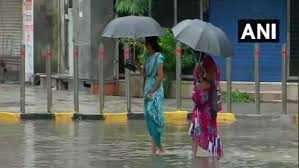Mumbai Rains: Challenges and Adaptations in 2023

Introduction
The monsoon season in India, particularly in Mumbai, is a significant event that affects millions. The city, known for its vibrant culture and economic prominence, faces annual challenges due to heavy rainfall. With climate change intensifying weather patterns, the recent Mumbai rains highlight crucial issues related to urban infrastructure, public safety, and disaster management.
Recent Rainfall and its Impact
In the last week of October 2023, Mumbai experienced unprecedented rainfall, with reports indicating over 300 mm in some areas within a single day. This sudden deluge led to severe waterlogging, causing disruptions in local transport systems and resulting in traffic gridlocks across major routes. Schools and colleges were closed temporarily, and local authorities began implementing emergency measures to address the situation.
According to the India Meteorological Department (IMD), this year’s rainfall was attributed to a combination of factors including the influence of cyclonic activities and a delay in the retreat of the southwest monsoon. The heavy rains significantly impacted the daily lives of residents, stranding many commuters and causing delays in the suburban rail network.
Government Response and Mitigation Efforts
In response to the current crisis, the Brihanmumbai Municipal Corporation (BMC) has initiated several measures to mitigate the impact of the rains. These include deploying pumping stations to remove excess water from flooded areas and bolstering drainage systems to manage runoff. Emergency response teams have also been activated to assist trapped citizens and ensure public safety.
Additionally, officials are urging residents to stay updated through official channels and avoid non-essential travel during peak rainfall hours. The city is also gearing up for preventive measures for the upcoming winter rains, focusing on long-term solutions such as improving drainage infrastructure and better urban planning to withstand extreme weather conditions.
Conclusion
The recent Mumbai rains serve as a reminder of the city’s vulnerability to natural disasters, underscoring the need for robust infrastructure and emergency management strategies. Looking ahead, enhanced forecasting techniques and proactive measures will be vital in safeguarding Mumbai’s residents from the adverse effects of heavy rainfall. As climate patterns evolve, continued investment in urban resilience will be key to ensuring the city’s future stability and prosperity.








